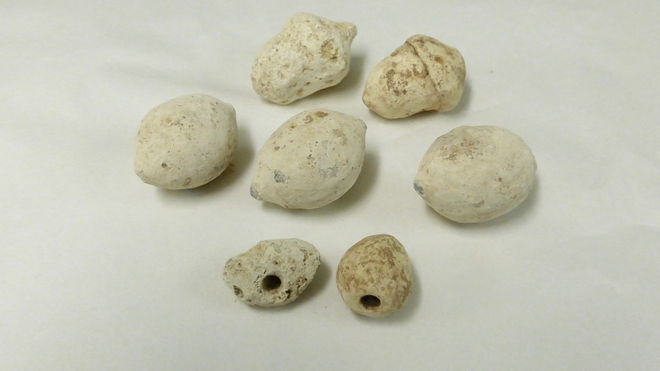
According to an article published recently by LiveScience, the bullets were discovered at Burnswark Hill in southwestern Scotland. The find was made during the excavation of a field where a massive attack of the Roman army took a place in the 2nd century AD.
The excavation work was led by John Reid of the Trimontium Trust, a Scottish historical society which is directing the first major archaeological investigation of Burnswark Hill site in 50 years. The bullets weigh about 1 ounce (30 grams) and had been drilled with a 0.2-inch (5 millimeters) hole. The researchers believe that it was designed to give the soaring bullets a sharp buzzing or whistling noise in flight, making them what they called a real ''terror weapon''.
John Reid said to LiveScience:
You don't just have these silent but deadly bullets flying over; you've got a sound effect coming off them that would keep the defenders' heads down. Every army likes an edge over its opponents, so this was an ingenious edge on the permutation of sling bullets.About 20 percent of the lead sling bullets discovered at Burnswark Hill had been drilled with the holes. They were also smaller than the typical bullets, so the researchers pinpointed that the soldiers may have used several of them with one throw. The size of the bullets gave the ability to fire them in groups of three or four, so the soldiers could receive a scattergun effect. The researchers believe that they were for ''close-quarter skirmishing''.
Sling bullets are a very common find at excavation sites related to Roman army battles in Europe. The largest ones are shaped like lemons and weigh up to 2 ounces (60 grams). The smaller bullets, shaped like acorns, are a common find on the site in Scotland. Apart from Romans, Greeks also used them during battles. However, the researchers suggest that the holes in Greek bullets were reservoirs for poison. Some of the bullets contain written messages intended to taunt their enemy. As Ancient Origins writer, Mark Miller, explained in his article:
Read the rest of the article here.



interesting, to say the least.